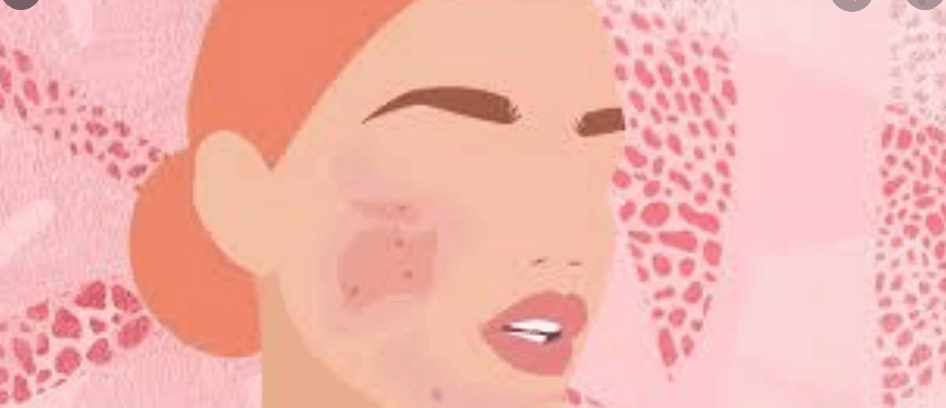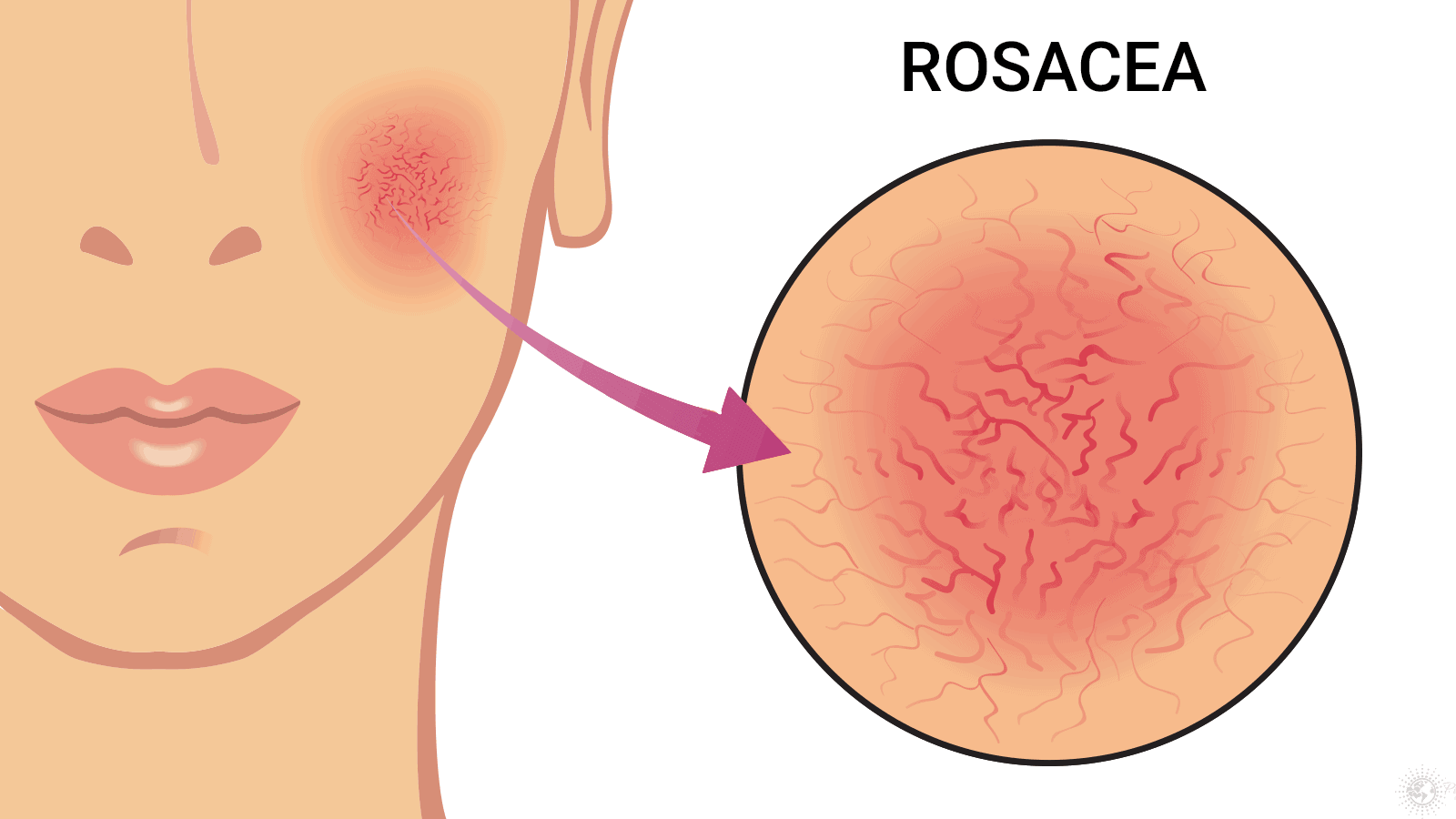Have questions about Rosacea and want to understand it better? Well, we’ve got you covered! This skin condition is under our beauty microscope this week, so scroll down to read what exactly rosacea is, the different types and the possible treatments for it:

What Is Rosacea?
Rosacea is a chronic skin disease that causes redness of the skin, visible blood vessels and red pus-filled bumps. The cause of rosacea is unknown and by far, there is no cure for the disease, but there are some medications that help reduce and manage its symptoms. It is often mistaken for acne, which is why a visit to the dermatologist is recommended if you feel you have similar symptoms. This skin condition can affect anyone, though it is mostly common found in middle-aged women and people with light skin.
Types And Their Symptoms
The most prominent and glaring symptom of Rosacea is redness that may be present on your forehead, nose, cheeks, chin, neck, head, ear and even in some cases, your chest. Blood vessels might also appear through the skin which can thicken and swell up. Rosacea symptoms are cyclic, usually flaring up for a few weeks or months and then subsiding for a time.
- Erythematotelangiectatic Rosacea (ETR) is where there is redness of the skin along with flushes and visible blood vessels on the centre of your face. There might be swollen sensitive skin which might burn or sting. Skin may also be extremely dry rough and scaly.
- Papulopustular (acne rosacea) associated with acne-like breakouts and raised patches of skin on oily, sensitive skin. This condition also induces visible blood vessels on the skin.
- Rhinophyma Rosacea is a rare type of condition where the skin thickens – usually around the nose, and even chin, forehead, cheeks and ears. Skin appears bumpy with large pores and visible broken blood vessels. This usually affects men.
- Ocular Rosacea is associated with sensitivity with and around the eyes. Eyes can be bloodshot, watery and gritty, and might itch and burn as well. Eyes may be sensitive to light and have diminished vision with possible developments of cysts on eyes as well. Broken blood vessels may also appear on eyelids.

Causes of Rosacea
Even though the main cause has not been determined, it is believed that it can be a combination of hereditary and environmental factors that instigate it or make it worse. Here are a few determined factors:
- Eating spicy food
- Eating products that contain a compound called cinnamaldehyde, which is found in cinnamon, chocolate, tomatoes and citrus.
- Drinking hot coffee or tea
- Having an intestinal bacteria called Helicobacter pylori that produces a hormone that makes the skin look flushed
- Having a skin mite called demodex that is harmless but some people might be sensitive to it
- The presence of a protein that protects the skin from infection
- Your genes
- Blood vessel trouble, usually happening because of sun damage or medications
- Sensitivity to cosmetic products
- Alcohol consumption and smoking
- Emotional factors like stress, anxiety, etc.
- Exposure to extreme weather
Diagnosis and Treatment
There isn’t a proper prescribed way to diagnose Rosacea except through examination of the skin and cultural tests to see how a part of the skin may react to demodex (skin mite). Dermatologists use various blood tests to rule out other skin diseases.
While there is no cure for this disease, there are medications that help control the symptoms. Doctors recommend Topical drugs to reduce redness, oral antibiotics and oral acne drugs. Some medications prescribed help clear away visible broken blood vessels, redness, skin bumps and swelling like Brimonidine (Mirvaso) and Metronidazole (Flagyl). Doctors may also recommend using other methods such as:
- Lasers where the intense light helps get rid of swollen blood vessels.
- Dermabrasion which sands the top layer of the skin
- Electrocautery where an electric current zaps damaged blood vessels
- Photodynamic therapy is another treatment that helps reduce redness and acne by topical photo sensitiser on the skin which is activated when light is applied
- Glycolic Peels is applied to the skin which might burn or itch but can improve redness and control rosacea








What do you think?
You must be logged in to post a comment.